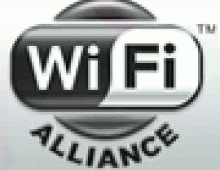
More Companies Join WiGig Alliance to Advance Next-Generation Wireless Technology
Advancing its goal of unifying the next generation of entertainment, computing and communications devices, the WiGig Alliance today announced five new members, bringing total membership to more than 20 companies.
Toshiba has joined the organization?s board of directors. Agilent Technologies, Beam Networks, Ralink Technology Corporation and Texas Instruments have also joined the semiconductor and device manufacturers, which are collaborating to develop a gigabit wireless technology to connect consumer electronics, handheld devices and personal computers.
"The WiGig Alliance continues to gain critical mass as the wireless industry looks ahead to 60 GHz technologies to provide the needed throughput for emerging applications that require Multi-Gigabit wireless connectivity speed," said Dr. Ali Sadri, President and Chairman of the WiGig Alliance. "Our newest members represent a cross-section of chipmakers, device manufacturers and test equipment vendors that reinforce our efforts to develop and certify a technology that will span multiple platforms."
WiGig Alliance members are defining a unified specification that will enable PCs, consumer electronics and handheld devices to communicate without wires at gigabit speeds within a typical room - more than 10 times faster than today?s wireless LANs. WiGig technology will leverage the unlicensed 60 GHz spectrum and address performance and power requirements of many wireless devices and platforms, while coexisting with and complementing existing and future 802.11 wireless systems.
The WiGig specification is expected to be available to member companies by the end of 2009. As the specification nears completion, the WiGig Alliance is also developing a plan to certify the interoperability of WiGig products.
The WiGig standard is expected to be finished by the end of this year, then testing to begin to make sure the wireless technology works properly in televisions, computers, mobile telephones, video cameras and other devices. The first WiGig -certified products are expected to appear by the end of 2010.
Many wireless technologies have been proposed in the last three years, including UWB (Ultrawideband), WirelessHD, and WHDI (Wireless Home Digital Interface). However, none of them has been widely established on the market. WirelessHD delivers about 4Gbps for consumer applications, and WHDI promises about 3Gbps.
The technology might eventually become part of a "tri-band Wi-Fi" that could provide connectivity over the 2.4GHz, 5GHz and 60GHz bands, at different speeds, depending on the strength of the signal in different locations around an access point.
Among the companies that comprise the WiGig Alliance board of directors are Atheros Communications, Inc., Broadcom Corporation, Dell, Inc., Intel Corporation, LG Electronics Inc., Marvell International LTD., MediaTek Inc., Microsoft Corporation, NEC Corporation, Nokia Corporation, Panasonic Corporation, Samsung Electronics Co., Toshiba Corporation and Wilocity. These companies are joined by contributors that include Agilent Technologies Inc., Beam Networks, NXP, Ralink Technology Corporation, Realtek, STMicroelectronics, Tensorcomm and Texas Instruments.
"The WiGig Alliance continues to gain critical mass as the wireless industry looks ahead to 60 GHz technologies to provide the needed throughput for emerging applications that require Multi-Gigabit wireless connectivity speed," said Dr. Ali Sadri, President and Chairman of the WiGig Alliance. "Our newest members represent a cross-section of chipmakers, device manufacturers and test equipment vendors that reinforce our efforts to develop and certify a technology that will span multiple platforms."
WiGig Alliance members are defining a unified specification that will enable PCs, consumer electronics and handheld devices to communicate without wires at gigabit speeds within a typical room - more than 10 times faster than today?s wireless LANs. WiGig technology will leverage the unlicensed 60 GHz spectrum and address performance and power requirements of many wireless devices and platforms, while coexisting with and complementing existing and future 802.11 wireless systems.
The WiGig specification is expected to be available to member companies by the end of 2009. As the specification nears completion, the WiGig Alliance is also developing a plan to certify the interoperability of WiGig products.
The WiGig standard is expected to be finished by the end of this year, then testing to begin to make sure the wireless technology works properly in televisions, computers, mobile telephones, video cameras and other devices. The first WiGig -certified products are expected to appear by the end of 2010.
Many wireless technologies have been proposed in the last three years, including UWB (Ultrawideband), WirelessHD, and WHDI (Wireless Home Digital Interface). However, none of them has been widely established on the market. WirelessHD delivers about 4Gbps for consumer applications, and WHDI promises about 3Gbps.
The technology might eventually become part of a "tri-band Wi-Fi" that could provide connectivity over the 2.4GHz, 5GHz and 60GHz bands, at different speeds, depending on the strength of the signal in different locations around an access point.
Among the companies that comprise the WiGig Alliance board of directors are Atheros Communications, Inc., Broadcom Corporation, Dell, Inc., Intel Corporation, LG Electronics Inc., Marvell International LTD., MediaTek Inc., Microsoft Corporation, NEC Corporation, Nokia Corporation, Panasonic Corporation, Samsung Electronics Co., Toshiba Corporation and Wilocity. These companies are joined by contributors that include Agilent Technologies Inc., Beam Networks, NXP, Ralink Technology Corporation, Realtek, STMicroelectronics, Tensorcomm and Texas Instruments.



















